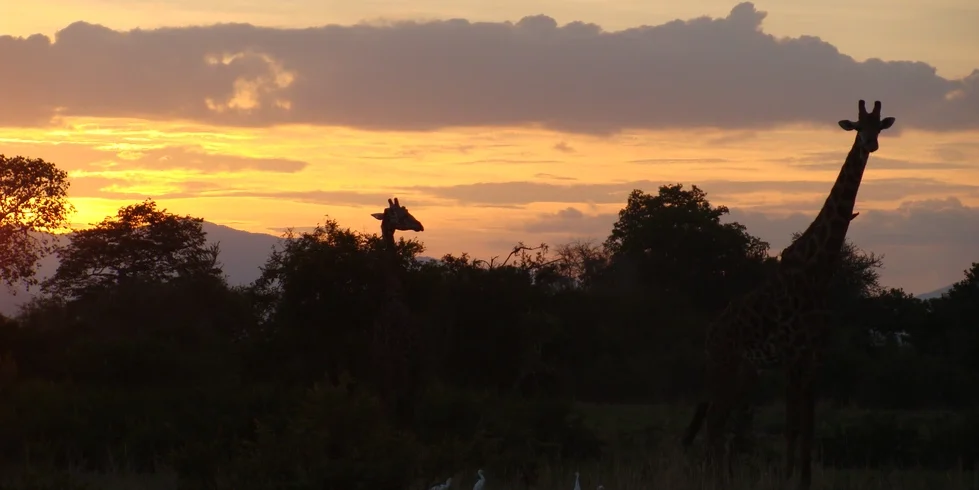- 1
- 1
- 1
- 1
- 2
- 6
- 2
- 10
- 4
- 2
- 6
- 11
- 2
- 1
Tailor made Safari to the less visited destination – Southern & Western Circuit – Selous, Ruaha, Mikumi, Saadani, Katavi, Gombe, Mahale, Zanzibar, Kilwa & Mafia .
Arusha National Park is one of Tanzania’s smaller, but most diverse and scenic parks. Located just 25 kilometers (16 miles) from Arusha town, it offers visitors a unique combination of landscapes and wildlife, all with the backdrop of Mount Meru, Tanzania’s second-highest mountain. The park is known for its lush forests, tranquil lakes, diverse wildlife, and volcanic features, making it an excellent choice for day trips and short safaris.
Key Features of Arusha National Park:
Ngurdoto Crater:
Often referred to as “Little Ngorongoro,” this crater is one of the park’s main attractions. While it’s smaller than the famous Ngorongoro Crater, it’s home to a variety of wildlife, including buffalo, warthogs, and various antelope. The crater floor is surrounded by beautiful montane forests.
Momella Lakes:
The Momella Lakes are a group of shallow lakes in the park, known for their stunning beauty and abundant birdlife, including flamingos, pelicans, and other waterfowl. The lakes are fed by springs from Mount Meru and provide an excellent opportunity for birdwatching and photography.
Mount Meru:
Towering over the park at 4,566 meters (14,980 feet), Mount Meru is the second-highest peak in Tanzania, after Mount Kilimanjaro. It offers a challenging but rewarding climb, and the surrounding areas of the park provide incredible views of the mountain, particularly in the early morning light.
Wildlife:
Arusha National Park is home to a wide range of wildlife, including:
Giraffes
Zebras
Buffalo
Warthogs
Colobus monkeys (especially the black-and-white colobus monkeys, which are unique to the park)
Antelopes (such as the duiker, waterbuck, and impala)
Leopards (though they are elusive and rarely seen)
Birds: The park is a haven for birdwatchers, with over 400 species recorded, including flamingos, herons, and eagles.
Activities:
Game Drives: Explore the park’s various habitats on a game drive to see its rich wildlife and stunning landscapes.
Walking Safaris: With a licensed guide, you can take a walking safari, which offers a more intimate and detailed experience of the park, focusing on smaller wildlife, plants, and the environment.
Mountain Trekking: For those who are adventurous, a climb of Mount Meru is an option, with various routes and camps along the way.
Canoeing: On Lake Momella, canoeing can be arranged for a peaceful way to enjoy the scenery and observe water birds.
Photography and Birdwatching: The park offers excellent opportunities for photographers and birdwatchers to capture the natural beauty and diverse species.
Best Time to Visit:
Dry Season (June to October): This is the best time for wildlife viewing, as animals tend to congregate around water sources. The weather is generally clear, and the game drives are excellent.
Wet Season (November to May): While the park is still beautiful during this period, the heavy rains make some areas more difficult to access, and some roads may be slippery. However, it’s also a great time for birdwatching, as migratory birds arrive.
Accessibility:
Arusha National Park is just a short 30-45 minute drive from Arusha, making it an ideal option for day trips. The park is easily accessible via both private vehicle and safari tours. Due to its proximity, it’s often considered a great introduction to Tanzanian wildlife before heading to larger parks like Serengeti or Ngorongoro Crater.
Accommodation:
There are no permanent accommodations inside the park, but there are several lodges and campsites near the park entrance in the town of Arusha. Visitors can opt for day trips or stay overnight in nearby accommodations.
Additional Information:
Park Size: 137 square kilometers (53 square miles).
Park Headquarters: The main entrance and park headquarters are located at Momella Gate, which is the primary point for entry.
Rangers & Guides: Walking safaris require an armed ranger for safety, and all game drives are led by experienced guides.
